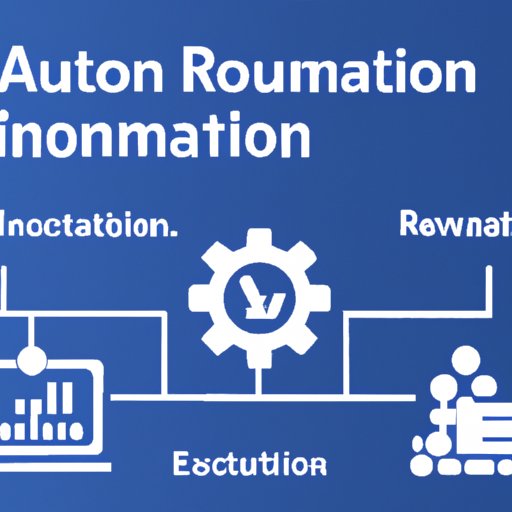Introduction
Automation is an increasingly popular way to streamline processes, improve efficiency, and reduce costs. Automation refers to the use of machines, computer programs, or other automated systems to perform tasks that would otherwise require human labor. As companies look to increase their productivity, they are turning to automation as an effective solution.
Investing in automation can offer numerous benefits, including increased accuracy, improved customer service, and greater cost savings. However, it is important to carefully consider the potential return on investment (ROI) before investing in automation solutions. This article will explore the benefits of automation, types of automation technologies available, analyzing potential ROI from automation, determining appropriate automation resources and budgets, and creating a plan for implementing automation solutions.

Types of Automation Technologies Available
Automation technologies are available in a variety of forms and can be used to automate different tasks. These technologies include robotics, artificial intelligence (AI), machine learning, and computer vision. Robotics refers to the use of robots to automate physical tasks, such as manufacturing and assembly. AI can be used to automate decision-making processes, such as customer service inquiries. Machine learning is used to analyze data and make predictions. Finally, computer vision is used to detect objects and recognize patterns.
In addition to these technologies, there are also software and hardware solutions that can be used to automate specific tasks. For example, software solutions can be used to automate data entry, while hardware solutions can be used to automate physical tasks, such as picking and packing. Each of these technologies have their own unique benefits and drawbacks, so it is important to research the potential ROI before investing in any automation solutions.
Analyzing Potential ROI from Automation
Before investing in automation solutions, it is important to carefully analyze the potential ROI. The first step is to estimate the cost of automation. This includes both the upfront costs of purchasing the necessary hardware and software, as well as any ongoing maintenance and support costs. It is also important to factor in any additional personnel or training costs that may be required.
Once the costs have been estimated, the next step is to calculate the expected return on investment. This involves estimating the potential savings or increased revenue that could result from implementing automation solutions. This can be done by comparing the costs of automation to the potential savings or increased revenue. If the expected return on investment is positive, then the investment in automation is likely to be worthwhile.

Determining Appropriate Automation Resources and Budgets
Once the potential ROI has been analyzed, the next step is to determine the appropriate resources and budgets for automation solutions. This involves assessing the current resources available, as well as allocating funds to automation solutions. It is important to consider both the short-term and long-term needs when determining the appropriate resources and budgets for automation solutions.
It is also important to consider the type of automation solution that is needed. For example, some solutions may require more upfront costs, while others may require more ongoing maintenance and support costs. Additionally, it is important to consider the skills and expertise of personnel when selecting automation solutions, as some solutions may require specialized training.

Creating a Plan for Implementing Automation Solutions
Once the appropriate resources and budgets have been determined, the next step is to develop a plan for implementing automation solutions. This involves identifying the most appropriate solutions and developing a timeline for implementation. Additionally, it is important to set performance goals and measure success. This helps ensure that the automation solutions are providing the desired results.
When creating a plan for implementing automation solutions, it is important to consider the impact of the automation solutions on existing processes and personnel. It is also important to consider any changes that may need to be made to existing processes in order to accommodate the automation solutions.
Conclusion
Investing in automation can offer numerous benefits, including increased accuracy, improved customer service, and greater cost savings. However, it is important to carefully consider the potential return on investment before investing in automation solutions. This article explored the benefits of automation, types of automation technologies available, analyzing potential ROI from automation, determining appropriate automation resources and budgets, and creating a plan for implementing automation solutions.
By understanding the potential benefits of automation and taking the time to carefully analyze the potential ROI, businesses can make informed decisions about investing in automation solutions. Additionally, by assessing current resources and budgeting appropriately, businesses can ensure that they have the necessary resources to implement automation solutions. Finally, by creating a plan for implementing automation solutions, businesses can ensure successful implementation and realize the full potential of automation.
(Note: Is this article not meeting your expectations? Do you have knowledge or insights to share? Unlock new opportunities and expand your reach by joining our authors team. Click Registration to join us and share your expertise with our readers.)
